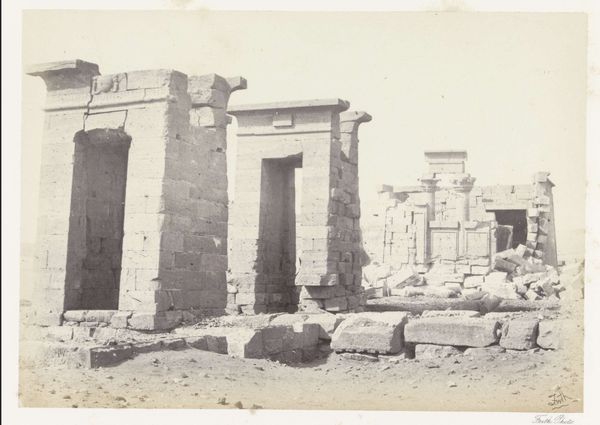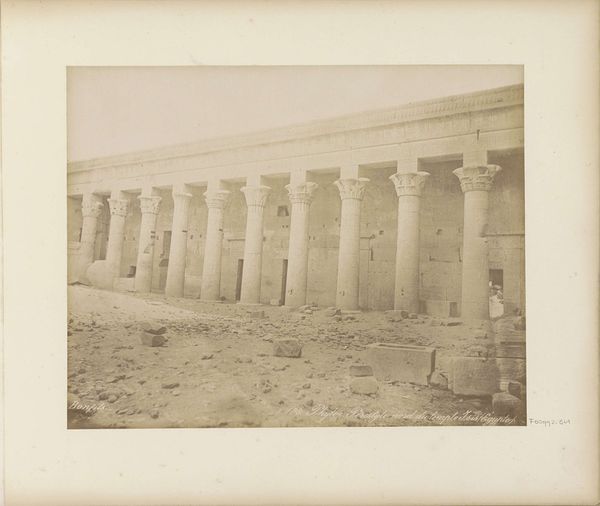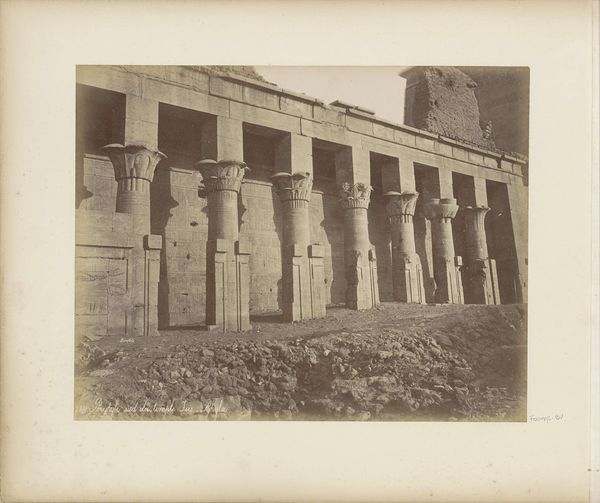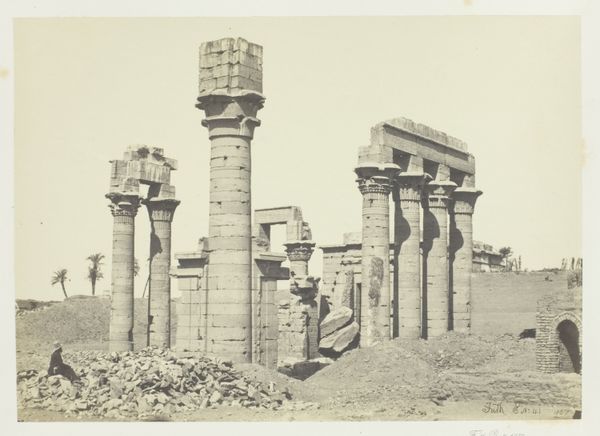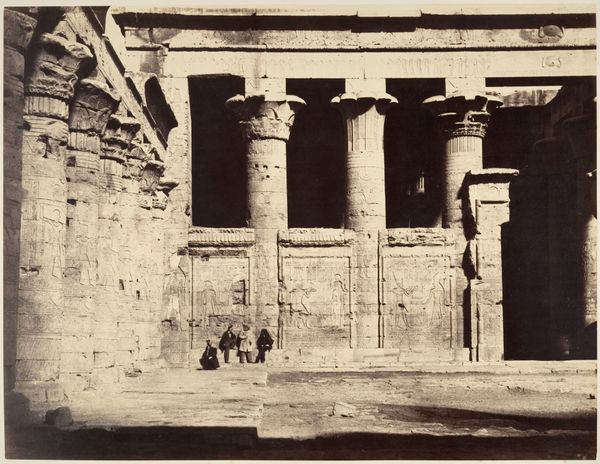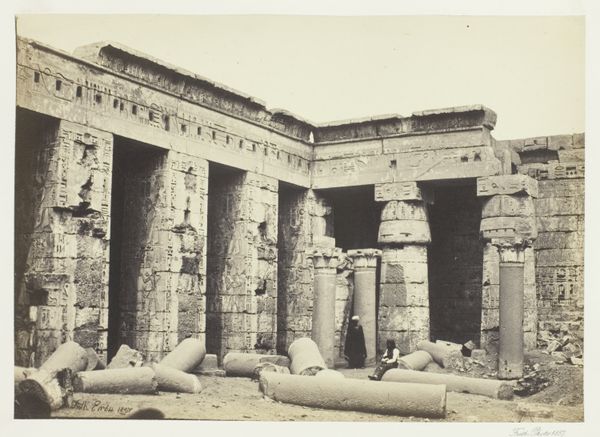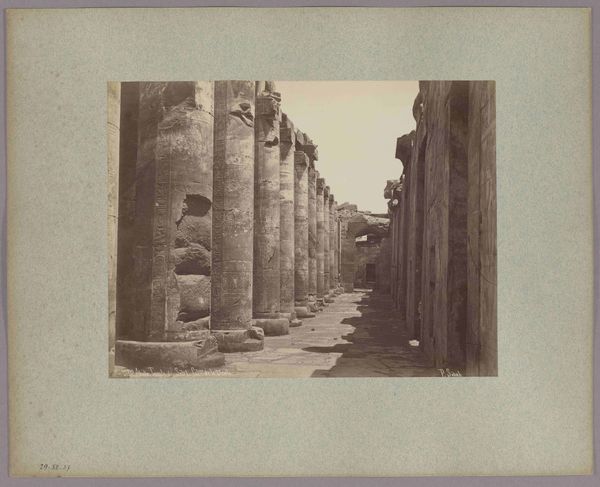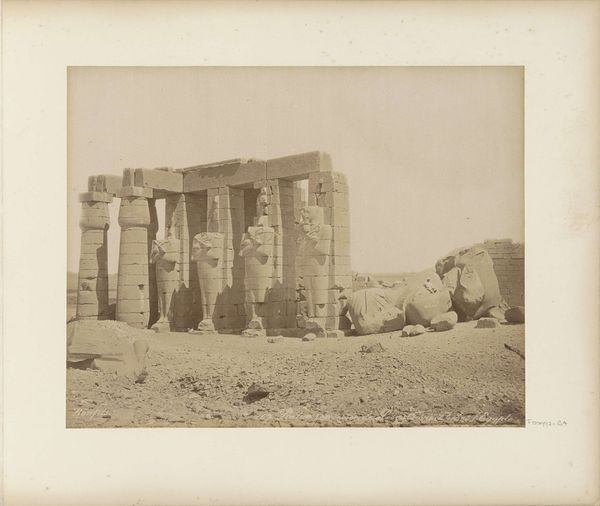
photography, gelatin-silver-print, architecture
#
still-life-photography
#
landscape
#
ancient-egyptian-art
#
photography
#
ancient-mediterranean
#
gelatin-silver-print
#
architecture
#
monochrome
Dimensions: height 217 mm, width 275 mm
Copyright: Rijks Museum: Open Domain
This albumen print, by C. & G. Zangaki, captures the courtyard of the Temple of Horus in Edfu. The temple, a massive stone structure, is rendered in tones of sepia, emphasizing its monumental scale and the intricate carvings that adorn its surfaces. Consider the labor required to produce an image like this in the 19th century. The process begins with the creation of a glass negative, coated with a light-sensitive emulsion. Then, the print is made by placing the negative in contact with albumen paper, which has been coated with egg white and silver salts. This process, repeated to create multiple prints, was labor intensive, and the resulting images were valued for their clarity and detail. The photograph not only serves as a visual record of the temple but also speaks to the era's fascination with documenting ancient cultures and distant lands. The meticulous craftsmanship of the albumen print mirrors the labor and artistry that went into creating the Temple of Horus itself. It challenges us to think about the relationship between art, craft, labor, and the social context in which both the temple and the photograph were created.
Comments
No comments
Be the first to comment and join the conversation on the ultimate creative platform.





